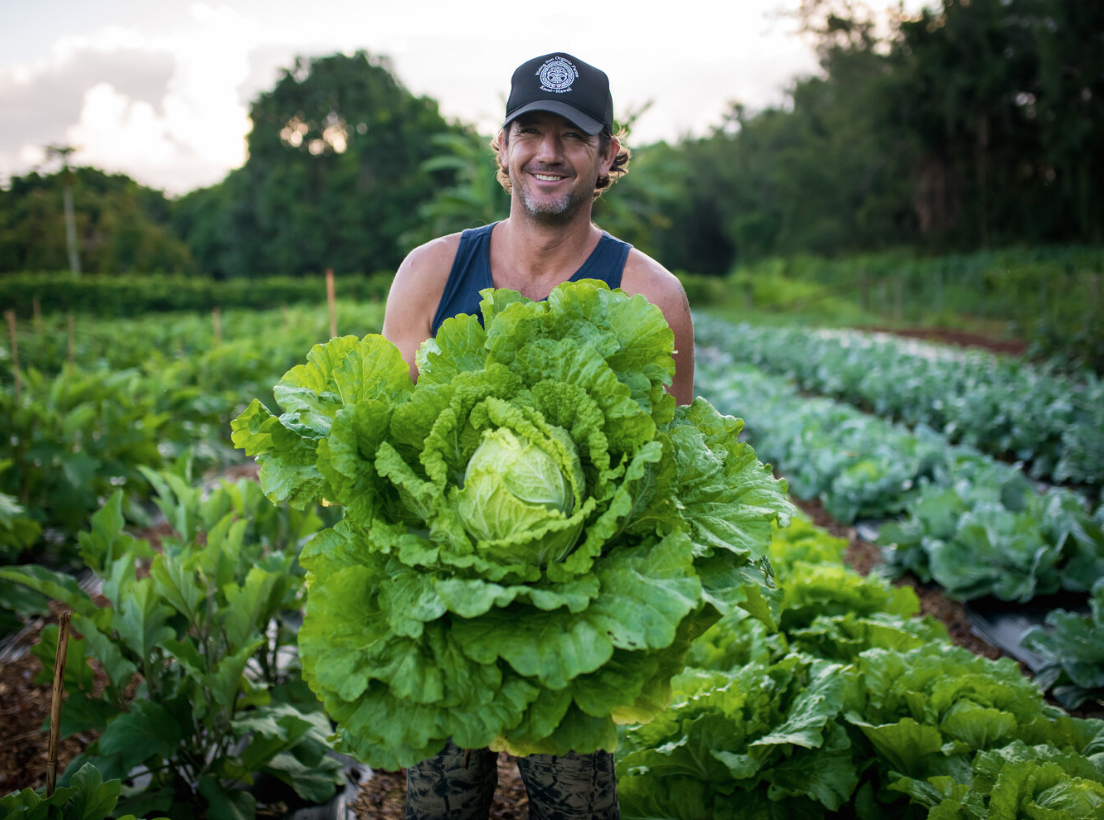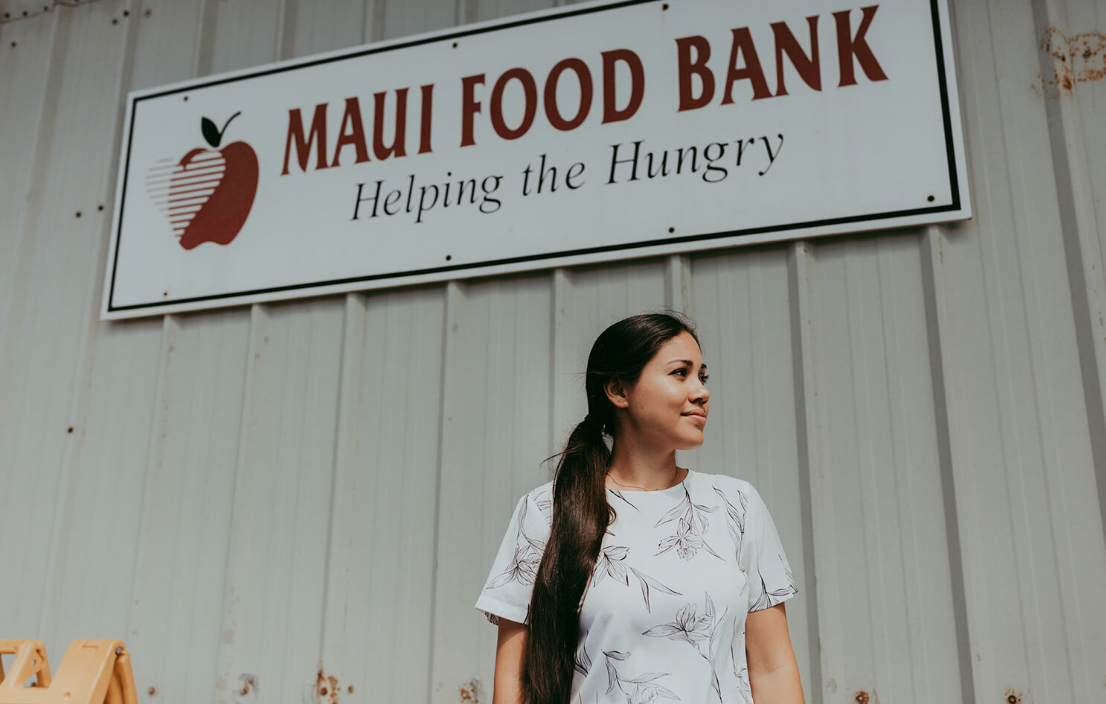Photo credit: Aunty Mona Silva, Uncle Glenn's Hawaiian Food, Kane'ohe. Photo by Dave Homcy.
Feeding Hawai'i: Stories from the Frontlines of Hawai'i's Response to COVID-19
Prior to the COVID-19 pandemic, my view of food security in Hawai'i focused on our reliance on the 6 million pounds of food that are imported to the islands daily and what would happen if the barges stopped.
Although the barges haven't stopped, for many, food insecurity in the islands has been the highest ever experienced. The Hawai'i Center for Food Safety has had the opportunity and privilege to check-in with many stakeholders across the food system during these challenging times. As we are conducting one-on-one interviews with farmers, ranchers, hunger relief agencies, restauranteurs, and legislators about their experiences during COVID-19, I am learning firsthand about the pukas in our local food system and what we can do to fill these gaps.
In the process, I have discovered my own local food system blind spots, which has motivated me to get absolutely clear on the definition of food security.

Sol Kahn, Rising Sun Organic Farm, Anahola, Kaua'i.Photo by Harneet Bajwa Photography.
Food security, as defined by the United Nations, means that ALL people, at ALL times, have physical, social and economic access to sufficient, safe and nutritious food that meets their food preferences and dietary needs for an active and healthy life.
With the loss of restaurant and hotel expenditure, local farmers are facing an overabundance of crops. Some are able to pivot to direct consumer sales, while others find themselves burdened with crops grown specifically for visitor consumption.
I was feeling confident of my efforts to help farmers reach a direct customer base until the sobering discovery that online purchasing was unavailable to SNAP/EBT recipients. The closure of local farmer's markets further exacerbated these inequities, forcing our most food insecure populations to shop in the stores that many of us can avoid by ordering groceries online.
I had a similar reality check when confronted with the fact that it doesn't matter how many pounds of produce a farmer has to donate if the crop doesn't match the cultural needs of the community.
These intimate interviews reveal that our food challenges differ from island to island, and from ahupua'a to ahupua'a. There are, however, undeniable common experiences, one being the sentiment that there could be ample food in our islands to feed us through this crisis. Our challenges lie in insufficient infrastructure and distribution obstacles.
The solutions that have arisen during our interviews directly mirror those that food system analysts and ag working groups have espoused for decades.
To address the bottlenecks we are facing, local agricultural producers need support for aggregation and processing facilities including refrigerated storage and transportation, and increased capacity for animal processing, and inspectors. The barriers to successful farming (cost of land, water, and labor) will not be solved without critical consideration by our state, yet our legislature allocates less than half of one percent of the state budget to our Department of Agriculture.
Local experts have long been beating the drum for the cross-sector collaboration that is finally emerging out of necessity in the wake of COVID-19. As hotels and restaurants closed, the Department of Education and hunger relief agencies stepped up as viable and large-scale consumers of locally sourced produce and protein. Now is the time to revisit our policies and campaigns to support comprehensive local institutional procurement, and to fund full-time positions for food access coordinators on every island.
One farmer we spoke to hung his hat on being in the business of "farming kama'aina". Policymakers need to take a page out of this book and double down on investments in programs that steer homegrown youth into agricultural careers. We need to farm not only farmers but agricultural planners and food systems analysts. By supporting school garden and farm to school programs, we can also grow new consumers (and palates) for local agriculture.

Tita Kaiwi, Agency Director, Maui Food Bank. Photo by Cadencia Photography.
We also need to take a serious look at our food waste. Backyard gleaning services and ugly produce movements are having their moment. Excess prepared food needs to legally make its way to the hungry. We need commercial composting facilities to ensure that everything compostable is diverted from our landfills, including animal byproducts. With the high expense of synthetic inputs and fertilizers, we need to support initiatives for regenerative and natural farming methods, including the production of cover crops seeds, indigenous microorganisms, biochar, and bloodmeal.
A recurring value amongst the farmers we've spoken to is the obligation to m'lama 'aina. Without healthy 'aina, we don't have healthy food. The ancestral wisdom of kanaka 'oiwi and the values of the ahupua'a system holds the keys to sustainability. In 2020, it should go without saying that every organization, working group and think tank dedicated to rebuilding a resilient local food system needs Hawaiian representation at the table.
We ask our interviewees what the general public can do to strengthen our local food future. The resounding answer is to BUY LOCAL NOW and to continue to buy local as we reopen and rebuild. Each of us can make small and meaningful impacts every time we choose to shorten our own personal food supply chain.
Now is the time to invest in Hawai'i's food future. COVID-19 has offered us a trial run in demonstrating what might happen if the barges stopped. In terms of food security, we are still a long way from ensuring that all of the people of Hawai'i have access to safe, healthy, nutritious, and culturally appropriate food.
Check out our interviews and more at feedinghawaii.org.
Originally published on Sierra Club of Hawai'i's blog.





